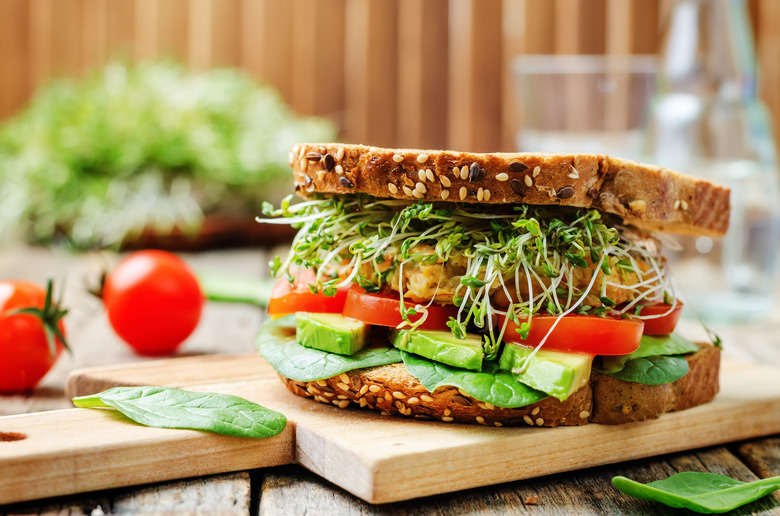How Are Chemical Bonds Important In Metabolism
It doesn't matter what you are doing right now (like reading this article) because the cells in your body are hard at work doing more than you know. They are using the energy stored in chemical bonds in order to do work in the body that is needed to keep you alive and functional.
All of the chemical reactions that take place inside of your body are referred to collectively as your metabolism. These reactions can be either spontaneous or not spontaneous and may absorb energy or release energy.
Reactions that require energy make use of the energy you give your body when you eat food. The food that you eat is broken down by your body so that you have energy for various cellular processes, including growth and repair.
A metabolic pathway can move in either direction: toward breakdown of molecules or toward building molecules.
What Are Metabolic Pathways?
What Are Metabolic Pathways?
Metabolic pathways are a series of chemical reactions that are connected in some way. Basically, the product of one reaction may be the reactant of the next.
There are two type of metabolic pathways:
1\. **Catabolic:** Catabolic pathways break down molecules and release energy. For example, the food you eat as sugar or fat contains energy in the bonds of these macromolecules. When the complex molecule is broken down into its component parts, energy that was stored in those bonds is released and can be used by the cell.
2\. **Anabolic:** Anabolic pathways build molecules from smaller components and require energy input. For example, when your cells need to make DNA in order to replicate the process of building, the individual the process is anabolic.
Catabolism: An Example
Catabolism: An Example
One important example of catabolism is the breakdown of glucose to make energy. A very general equation of this very complex process includes the breakdown of glucose (like the sugar in the slice of cake you had for dessert) to carbon dioxide (what you exhale) and water:
\(\mathrm{C_6H_{12}O_6(s)+6O_2(g) \rightarrow 6CO_2(g)+6H_2O(l)}\)
Most of the cells in your body get the energy they need through the energy that is harnessed from the breakdown of glucose. The free energy released through this process (cellular respiration) is ΔG° = -2,880 kJ.
In the cell, this reaction does not take place all at once but rather in a series of steps through the use of enzymes. Much of the free energy that is released along the way is used to make adenosine triphosphate, or ATP. ATP is the energy "currency" of the cell. ATP is used to store energy until the cell needs it.
When the cell needs ATP, it can use the hydrolysis of ATP from ATP into ADP (adenosine diphosphate) to release 31 kJ of energy. This can be used to do something in the cell. For example, joining together alanine and glycine (two amino acids) to form a dipeptide requires 29 kJ of free energy. As such, it is not a spontaneous process.
However, when an enzyme couples ATP hydrolysis with dipeptide formation, the reaction can be made spontaneous since the net free energy change is then -2 kJ.
Anabolism: An Example
Anabolism: An Example
Where do you get your energy? Where does the glucose come from? Well, it comes from plants! Plants make sugar through the process of photosynthesis. Plants use light energy to convert carbon dioxide to sugar:
\(\mathrm{6CO_2(g)+6H_2O(l) \rightarrow C_6H_{12}O_6(s)+6O_2(g)}\)
This reaction is basically the opposite of cellular respiration. Plants store some of this glucose and can use some of it to make ATP of their own. When you eat a salad, your body will end up using the sugars in that food to ultimately break it down and make ATP.
References
Cite This Article
MLA
Gupta, Riti. "How Are Chemical Bonds Important In Metabolism" sciencing.com, https://www.sciencing.com/how-are-chemical-bonds-important-in-metabolism-13710224/. 26 March 2020.
APA
Gupta, Riti. (2020, March 26). How Are Chemical Bonds Important In Metabolism. sciencing.com. Retrieved from https://www.sciencing.com/how-are-chemical-bonds-important-in-metabolism-13710224/
Chicago
Gupta, Riti. How Are Chemical Bonds Important In Metabolism last modified August 30, 2022. https://www.sciencing.com/how-are-chemical-bonds-important-in-metabolism-13710224/
